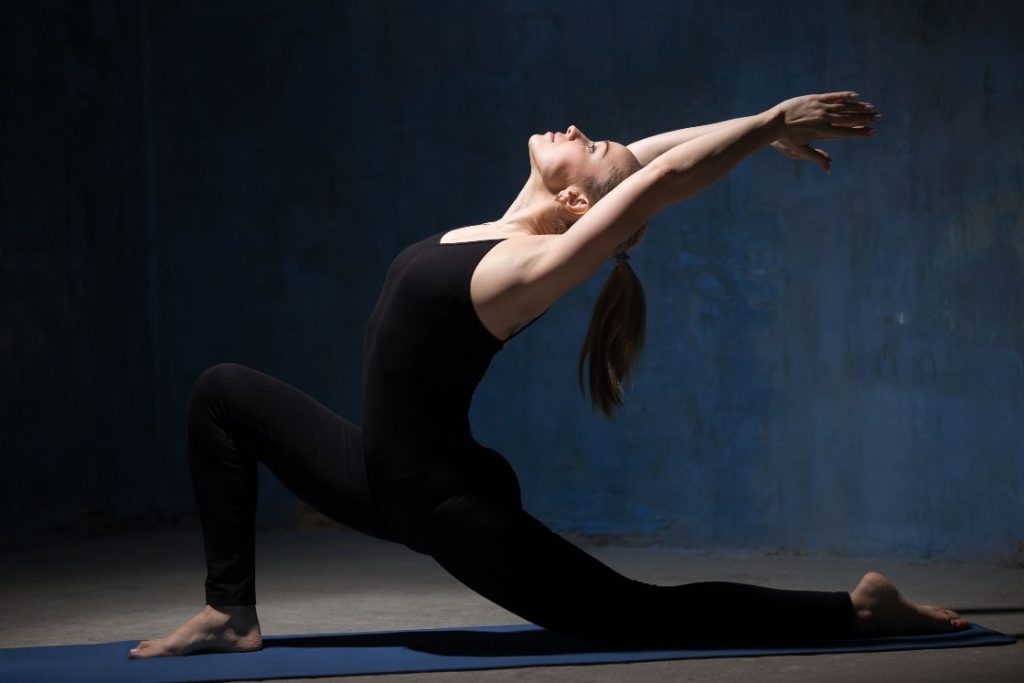
Anjaneyasana(Low-Lunge Pose) is an intense variation of warrior pose I. It is a beginner level pose performed standing on the floor. This pose contains the elements of stretching, back bending, balancing, and requires the strength of the practitioner.
Getting into the pose requires taking a leg forward with foot on the ground and bend the knee. The other knee is kept to the floor with the lower leg resting on the ground. The hands are raised and the head and neck are bent arching the back.
The backbend and stretching involve Mula bandha (root lock) and Uddiyana bandha (abdominal lock), hence provides immense benefits to the body.
The pose offers a lot of variations that create a room for every practitioner out there as per their potential.
Mythological Meaning
Ajaneyasana is named after Lord Hanuman. He was the son of Anjani and also referred to as ‘Anjaneya.’ Lord Hanuman was a legend who has an incomparable potential, power, and intellect.
This posture also inculcates such qualities in the practitioner by benefitting the overall health, and hence named so.
Ajaneyasana is also known by other names like low-lunge pose, and crescent moon pose. When performed with hands on the floor it is just like practicing the lunge position with lowering one leg to the ground. However, with the extending the hands and attaining the pose fully the body mimics the crescent moon, hence the name.
Anjaneyasana Practice Guide
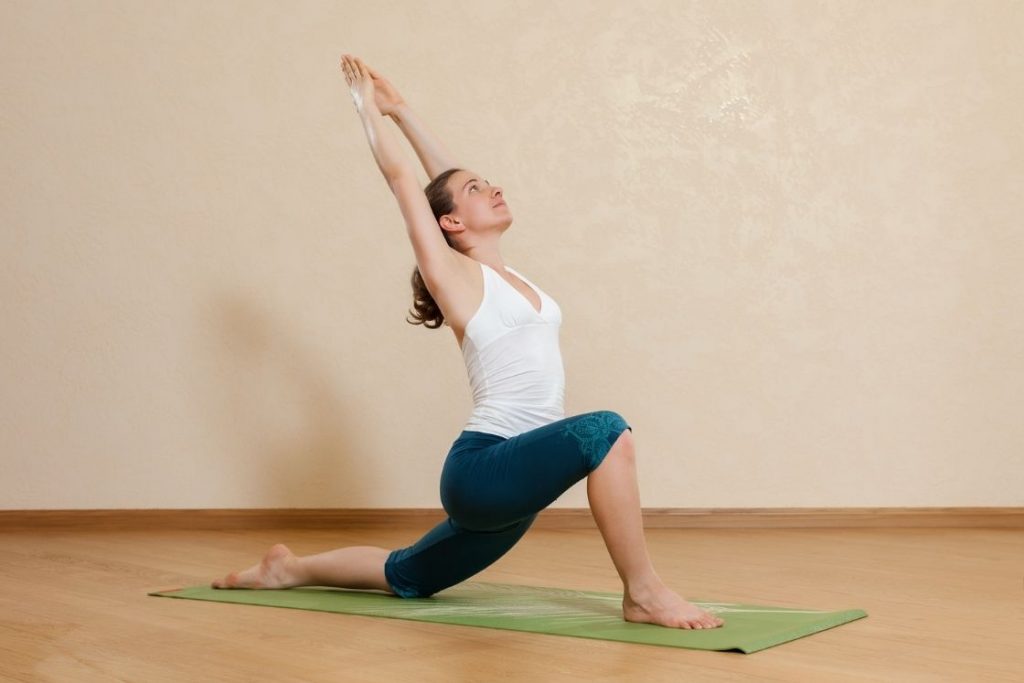
Precautions & Contraindications
- In the case of high blood pressure or any heart disease, Anjaneyasana should only be practiced under expert guidance.
- Do not perform anjaneyasana if you have an in and around lower back, hips, hamstrings, and knees injury.
- If you have a weak body balance then practice this asana using props given below.
- If there is any neck or shoulder issue, then maintain the pose looking forward with hands on the bent knee.
- Avoid its practice during pregnancy.
Peparatory Poses
- Sun Salutations A (Surya Namaskar A)
- Warrior Pose I (Virabhadrasana I)
- Warrior Pose II (Virabhadrasana II)
- Extended Triangle Pose (Utthita Trikonasana)
- Low Lunge Hands To Knee (Anjaneyasana Hands To Knee)
- Hands Bound Rising Locust Pose (Baddha Hasta Utthita Stiti Salabhasana)
Anjaneyasana Steps
- Stand in tadasana.
- Take a wide stance separating your legs and place your hands on the hips.
- Turn your right toes outwards at 90 degrees.
- Rotate your upper body towards your right.
- Bend your right knee and lift the back heel off the floor.
- Exhale lowering the left knee and resting the lower leg on the floor with toes point back.
- Inhale, raise your arms joining the palms above the head.
- Start leaning backward raising the chin as high as possible.
- Balance this pose for 5-8 breaths.
- Inhale, bring the body to the center.
- Exhale, lower hands on the hips.
- Curl the toes of the back foot and come up straightening both the legs.
- Turn forward and repeat the same to the other side.
- Bring your legs together and relax in tadasana.
Beginner’s tips
Although the pose is about finding the balance, still beginners can perform the pose in front of the wall. Try it by pressing the big toe of the front foot against the wall and raising the arms to keep the fingertips to the floor. Gradually finding the balance, perform it away from the wall.
Follow-up Poses
- Warrior Pose I (Virabhadrasana I)
- Warrior Pose III (Virabhadrasana III)
Modifications and Props
- Blanket – Place a folded blanket underneath the back knee rather than directly resting it to the floor. This is beneficial to attain the pose if you are feeling any soreness in the knee.
- Aerial strap – Tie a yoga strap aerially. Bring the back leg down to the floor. Hold the strap from both the hands by wrapping it around the wrist. Arch back and hold the pose. The strap help in maintaining balance.
- Yoga block – This prop comes handy for those who either have shoulder or neck issues. As they do not raise the arms and bend back, they can keep their hands on the blocks by placing each on either side of the leg.
Variations
- Anjaneyasana Hands To Knee- In this variation, the position of legs remains the same. However, the hands rest on the bent knee rather than rising above the head.
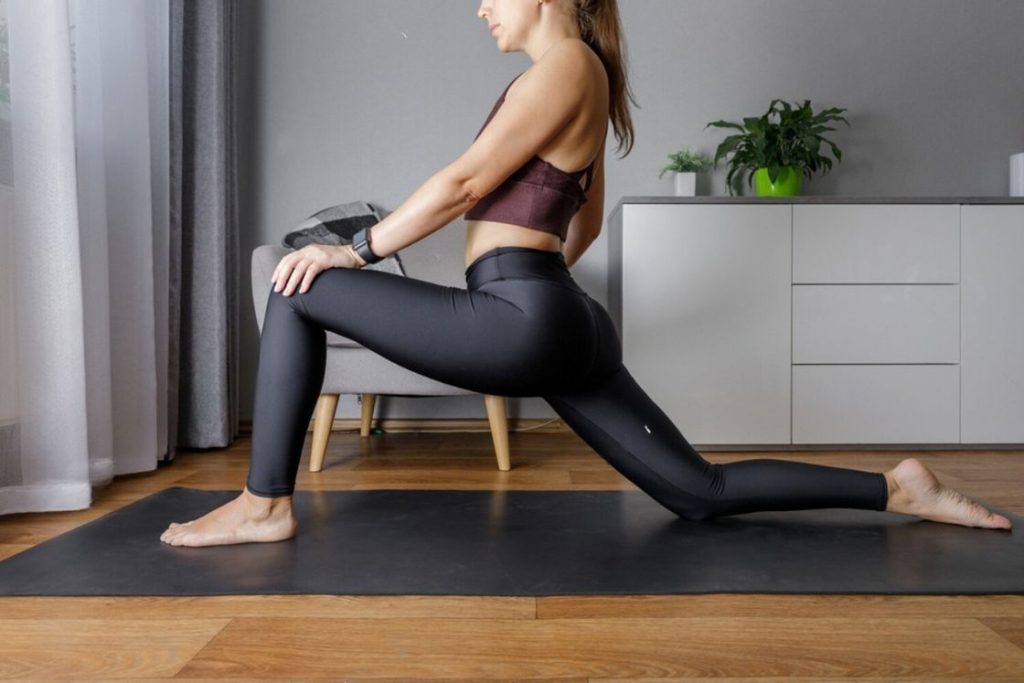
- Anjaneyasana Open twist- Keeping the right knee bend bring the right hand to the floor beside the inner ankle. Rotating and opening the chest to the left raise the left hand with fingers pointing up. Rotate the head and look towards the ceiling.
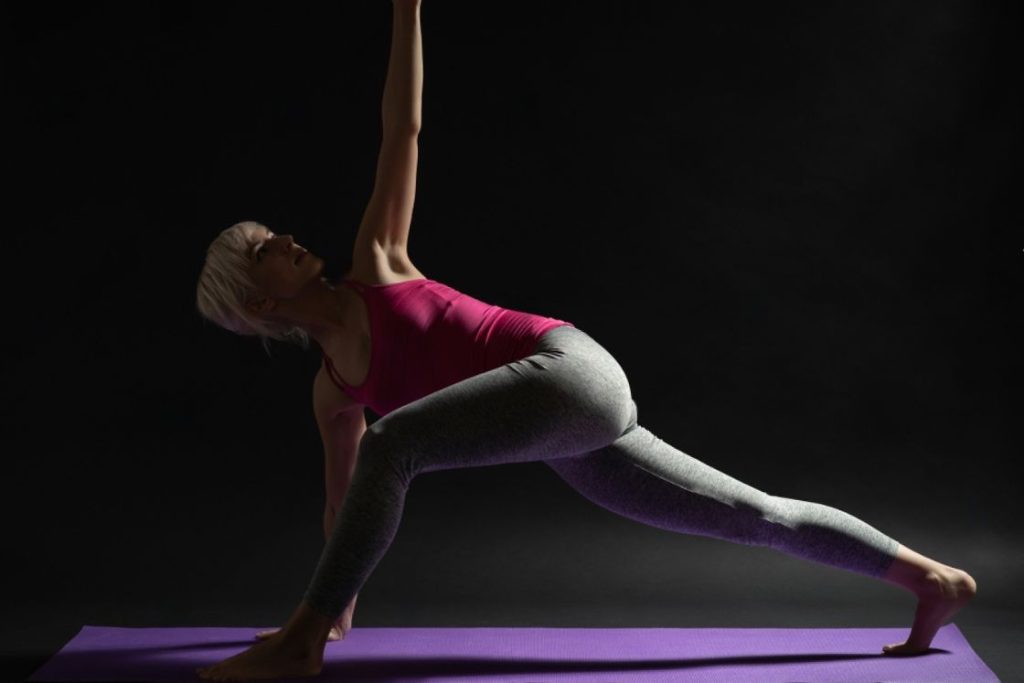
- Anjaneyasana Lateral Extension- If the right leg is taken like the back leg, then place your right hand on the stretched calf. Raise your left hand above your head with your back bent. Keep your eyes fixed on the floor.
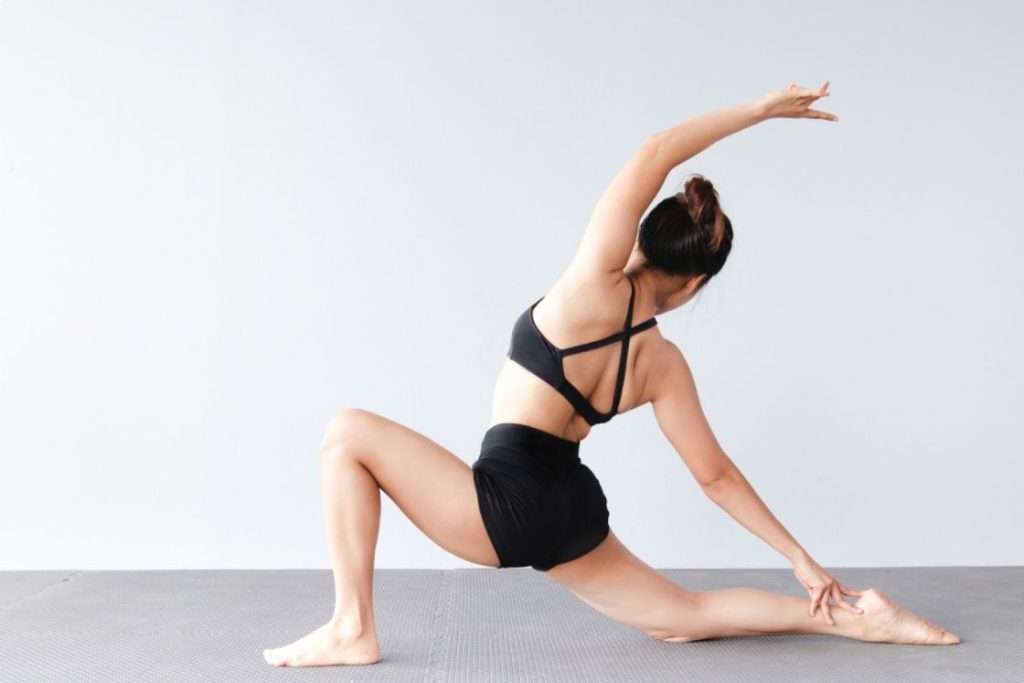
- Parivrtta Anjaneyasana variation- After bringing the back leg into the floor, raise your back foot with toes pointing up. Place your alternative hand on the side of the foot to maintain the pose. Another hand is placed on the ground beside the respective outer thigh.
- Paschim Namaskar Anjaneyasana- Keeping the front knee bend and back leg laid on the floor take your hands to your back. Join them in reverse prayer pose.
- Anjaneyasana triceps stretching- In this variation only the hands’ position is modified. Both the palms are joined behind the head with fingers pointing towards the floor.
Anjaneyasana Benefits
1. Promotes flexibility
This pose is all about balancing and stretching the entire body. The stretches expand the muscles of the neck, shoulders, spine, abdomen, hips, and legs. This makes the body flexible and strengthens the muscles.
2. Burns fat
The contraction of the muscles around the abdomen, hips, and thighs provides toned muscles. It causes the tightening of the muscles by burning the excessive fat layer around these regions.
3. Aids in better digestion
The involvement of the abdominal muscles in the pose stimulated the internal organs. The digestive organs viz. stomach, liver, pancreas, etc. are stimulated. This helps in making the digestive system more efficient.
4. Improves blood circulation
Anjaneyasana involves opening the chest and lifts the heart. It enhances the flow of fresh blood and eventually enhances the circulatory system of the body.
5. Benefits respiratory system
The final posture involves the slight backbend and expansion of the chest. This expands the lungs and increases the breathing capacity. This improves the respiratory system and prevents asthma, bronchitis, etc.
6. Cures sciatica
Anjaneyasana provides a deep stretch to the spine. This strengthens the lower back muscles and the improved blood flow in this region and the nerves. This cures chronic lower back pain like sciatica.
7. Maintains proper metabolism
The backbend of the head and neck stretches the neck muscles and stimulates the thyroid gland. It activates the secretion of the thyroid hormones that regulate the overall metabolism of the body.
8. Develops a sense of awareness
Anjaneyasana is a balancing posture that requires mindfulness. Throwing the head backward and maintaining integrity brings a sense of awareness and improves concentration.
According to a supporting study, anjaneyasana when performed regularly with other yogic exercises improves balance. It even cures the symptoms of Parkinson’s Disease.
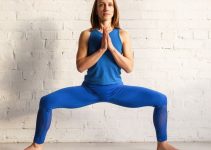
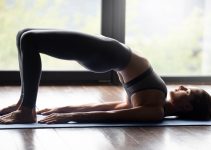
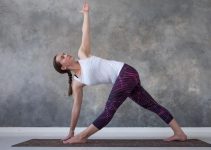
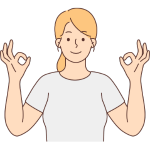
 Oct 24th to 30th
Oct 24th to 30th Learn Mudras
Learn Mudras  Deepen Your Practice
Deepen Your Practice  Find Inner Peace
Find Inner Peace